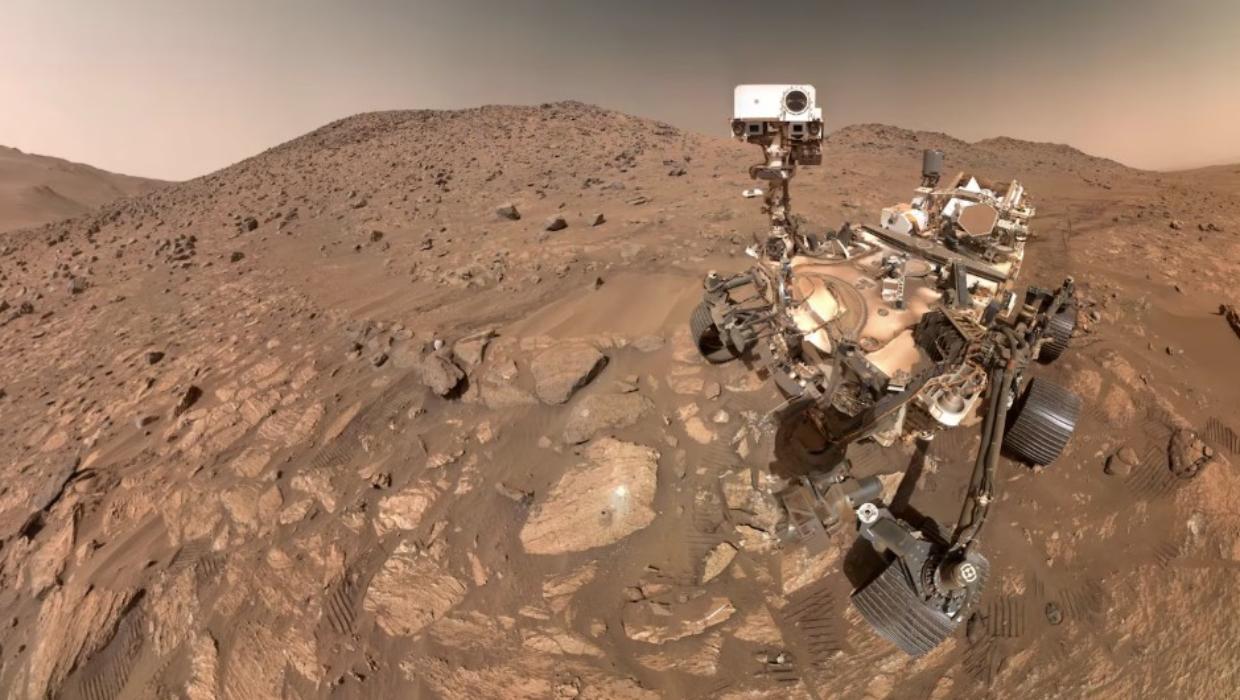Science
NASA Uncovers Potential Life Signs in Martian Rock Analysis

NASA has reported a significant development in the search for extraterrestrial life on Mars. Detailed analysis of images captured by the agency’s Perseverance rover has revealed what scientists describe as a “potential biosignature” in rocks located in the planet’s Jezero Crater. This discovery, announced in October 2023, marks a pivotal moment in our understanding of the Martian environment and its capacity to support life.
The Perseverance rover, which landed on Mars in February 2021, has been exploring the Jezero Crater, an area believed to be an ancient lakebed. Researchers focused on a collection of speckled rocks that exhibited unusual characteristics. These rocks contain organic materials that could indicate past biological activity. The identification of a potential biosignature suggests that conditions on Mars may have been suitable for life at some point in its history.
Detailed Analysis of Martian Rocks
The images analyzed by scientists show intricate textures and formations that raise intriguing questions about their origins. According to Dr. Jennifer Trosper, project manager for the Perseverance rover, “We are seeing something that could be a biosignature, which is an incredibly exciting possibility.” The findings have prompted the team to consider further investigations to confirm the presence of life-related elements.
The findings are particularly significant given that the Jezero Crater is the site of an ancient river delta, making it a prime location for the presence of organic compounds. The rover has been equipped with advanced scientific instruments designed to analyze the geological composition of Martian rocks and soil. These tools have provided valuable data that scientists are now meticulously studying.
Implications for Future Exploration
The potential discovery of a biosignature on Mars opens new avenues for exploration and research. Scientists are now planning additional missions to further investigate the findings and potentially gather samples for return to Earth. Such samples could provide more definitive evidence of ancient life and contribute to our understanding of how life might arise on other planets.
The excitement surrounding this discovery highlights the ongoing commitment of NASA and its partners to explore Mars. As Dr. Thomas Zurbuchen, Associate Administrator for NASA’s Science Mission Directorate, stated, “This is just the beginning of our efforts to understand the history of Mars and the possibility of life beyond Earth.”
In summary, NASA’s discovery of a potential biosignature in Martian rocks represents a major milestone in astrobiology and planetary science. The findings from the Perseverance rover may not only reshape our understanding of Mars but also inform future missions aimed at uncovering the mysteries of life in the universe.
-

 World3 weeks ago
World3 weeks agoPrivate Funeral Held for Dean Field and His Three Children
-

 Top Stories3 weeks ago
Top Stories3 weeks agoFuneral Planned for Field Siblings After Tragic House Fire
-

 Sports3 months ago
Sports3 months agoNetball New Zealand Stands Down Dame Noeline Taurua for Series
-

 Entertainment3 months ago
Entertainment3 months agoTributes Pour In for Lachlan Rofe, Reality Star, Dead at 47
-

 Entertainment2 months ago
Entertainment2 months agoNew ‘Maverick’ Chaser Joins Beat the Chasers Season Finale
-

 Sports3 months ago
Sports3 months agoSilver Ferns Legend Laura Langman Criticizes Team’s Attitude
-

 Sports1 month ago
Sports1 month agoEli Katoa Rushed to Hospital After Sideline Incident During Match
-

 Politics2 months ago
Politics2 months agoNetball NZ Calls for Respect Amid Dame Taurua’s Standoff
-

 World4 weeks ago
World4 weeks agoInvestigation Underway in Tragic Sanson House Fire Involving Family
-

 Top Stories3 weeks ago
Top Stories3 weeks agoShock and Grief Follow Tragic Family Deaths in New Zealand
-

 Sports2 weeks ago
Sports2 weeks agoEli Katoa Shares Positive Recovery Update After Brain Surgery
-

 Entertainment4 months ago
Entertainment4 months agoKhloe Kardashian Embraces Innovative Stem Cell Therapy in Mexico





















